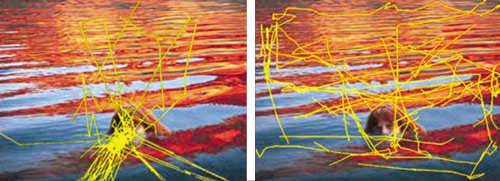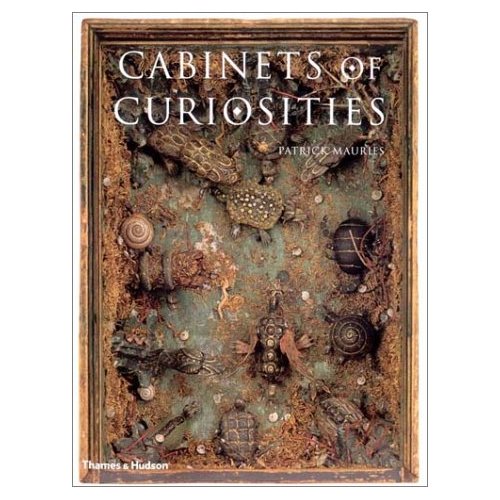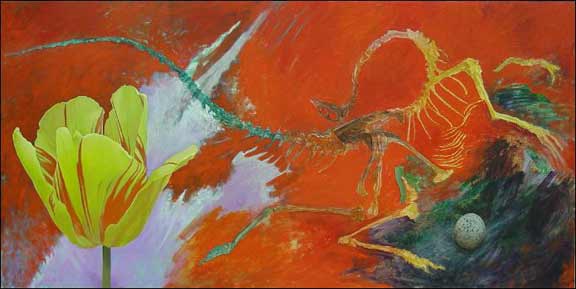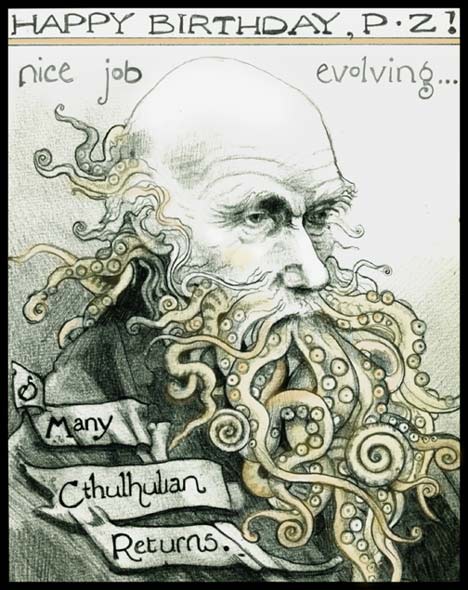Cognitive Daily: Artists look different
Cognitive Daily alerts us to a study quantifying the different visual scanning techniques used by artists and non-artists. Here’s a figure from the study, tracking eye movements in yellow:

The trained artist (right) looks at more of the entire picture, while the non-artist (left) focuses on “key areas” – in this case, the swimmer, but similar results were obtained for non-human “key areas”. (The non-artist control group were psychologists – also highly trained to study and retain information).
If you have artistic training (including self-guided training), you may have noticed this shift in your own observational techniques. An artist considers the scene as a whole: focusing on the subject in relationship to its context, rather than in isolation. I especially appreciate the way the artist’s eyes follow the rhythm of the waves diagonally across the painting – identifying and enacting an important compositional pattern that the non-artist appears to completely ignore.
The jerky, flyaway eye movements of the nonartists, which seem to repeatedly slide right off the image, are not a surprise either. Artists plan for those effects when composing a work, carefully guiding the imagined viewer’s eyes within the painting’s field. A standard rule of thumb is to avoid a strong, unbalanced line, or any object ending right at the border of the composition, because they tend to draw the onlooker’s eye irrevocably off the edge of the artwork (sort of like a ship falling off a flat Earth).






